With labour shortages set to bite in the next decade, construction firms are broadening their horizons. Hiring more women is one potential solution.
However, to achieve this, companies will need to examine the reasons behind the gender gap and identify strategies to encourage more women to join the sector.
Barriers Facing Women in Construction
Why don’t women work in construction? Some will argue it’s a choice or “just the way things are.” There’s certainly some truth to that. You cannot force people to sign up for a job they have no interest in.
Once you delve a little deeper, however, the subject becomes a lot more complicated. Here are some of the obstacles women face:
- Persistent stereotypes and cultural perceptions: Construction is still widely viewed as a physically demanding, male-dominated industry, discouraging women from pursuing careers in the sector.
- Lack of visible role models and mentors: With few women in leadership or technical roles, aspiring female professionals often struggle to see a clear path forward.
- Inflexible working patterns: Long hours, early starts, and limited part-time options can be difficult to balance with caregiving responsibilities, disproportionately affecting women.
- Workplace culture and on-site inclusion challenges: From inadequate PPE sizing to the risk of harassment or exclusion, many construction environments are still not built with women in mind.
Why Gender Diversity Matters
The question some might ask is, why do we need women to join the construction workforce? Sure, there are labour shortages. But why specifically does gender diversity matter?
Well, it’s not just about fairness – it’s also good for business.
Diversity in gender also means diversity in thought. You’re drawing more people from more walks of life who can offer a fresh perspective on a situation. Remember, that’s how innovation happens.
Research often shows that diverse teams make better decisions, foster greater innovation, and yield greater results. Bringing women on board doesn’t have to mean involvement in bricklaying or operating a crane. It covers project planning, time management, stakeholder communication, and leadership.
There’s also a strong social and strategic case. Aligning your company with ESG (Environmental, Social and Governance) objectives helps boost reputation, support tender success, and attract investment.
Last comes the practical reality: the sector can’t afford to ignore half the population. With construction demand rising and skills shortages growing, tapping into underrepresented groups provides security and sustainability within the sector.
Strategies to Attract More Women
Encouraging women to join the construction sector isn’t about pushing them into the profession. It’s all about the pull factors. Here are a few viable strategies:
Early Education and Outreach: Stereotypes and career expectations get embedded at an early age. Partnering with schools to offer female-led career talks and provide work placements to young girls is a fantastic way to introduce them to the construction industry and broaden their perspectives on the possibilities. That doesn’t just mean showcasing hands-on construction roles. Be more expansive with an introduction to everything from planning, stakeholder communication, and other vital aspects of the industry.
Inclusive Recruitment Practices: No one is going to apply for a job that clearly isn’t targeted at them. Inclusive recruitment practices aren’t about bending over backwards to hire women – it involves levelling the playing field. Gender-neutral job advertisements avoid male-focused language, and diverse interview panels offer women opportunities during the recruitment process. Knocking down these barriers means that women interested in a career in construction have an equal chance of succeeding.
Apprenticeships and Upskilling: It’s hard for a lot of people to swap careers after the age of 30. The few who do it aren’t likely to try their hand at construction – at least not yet. Offering targeted programs and scholarships for women opens the doors. It’s the first step on the ladder.
Strong Employer Branding: Humans are visual creatures, and we also spot subtle (or not-so-subtle) patterns. If your branding is geared towards men only, then it’s not very inviting to anyone else. Showcasing diverse teams, encouraging female leadership, and considering flexible career options helps make the workplace more friendly and open to female applicants.
Creating a Supportive Environment
Recruitment is just the beginning. If you want to retain female talent, you need to create an environment where women feel equally valued, supported, and set up to succeed.
It starts with the basics: on-site facilities, properly fitting PPE, and a little bit of extra thought. Too many sites are designed exclusively for men. That’s understandable given that men comprise most of the workforce. But if you want to get women signed up, you’ll need to provide the same facilities. Offering female bathrooms, well-fitting safety gear, and inclusive signage are small changes that make a big difference.
Mentoring is another core factor. Leadership development programmes and peer mentoring provide women with opportunities to showcase their skills and talents. They can learn from other successful women in the industry, following the same clear path to progression.
Family-friendly policies are equally important. Flexible hours, generous parental leave, and career re-entry pathways all help retain skilled women who might otherwise leave the industry for good. Support like this isn’t just a nice-to-have; it’s essential for building a balanced, future-ready workforce.
Case Studies




